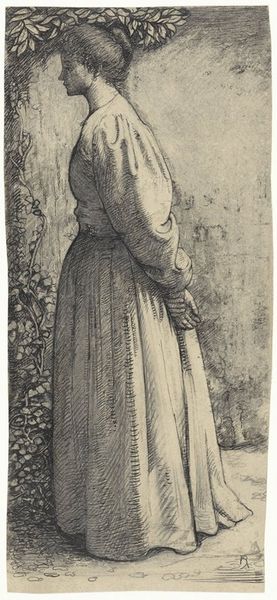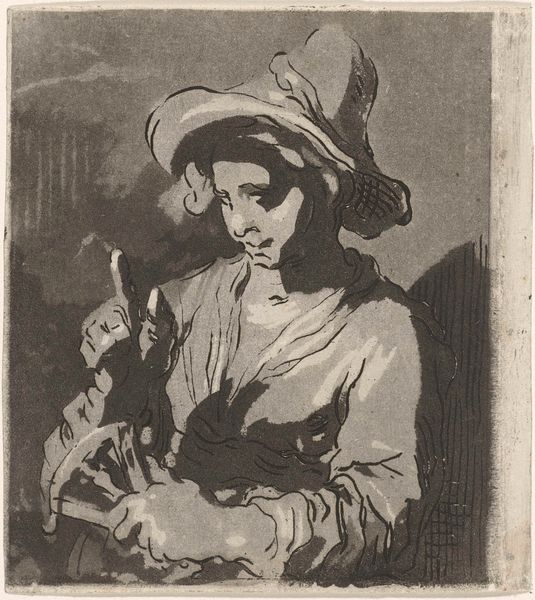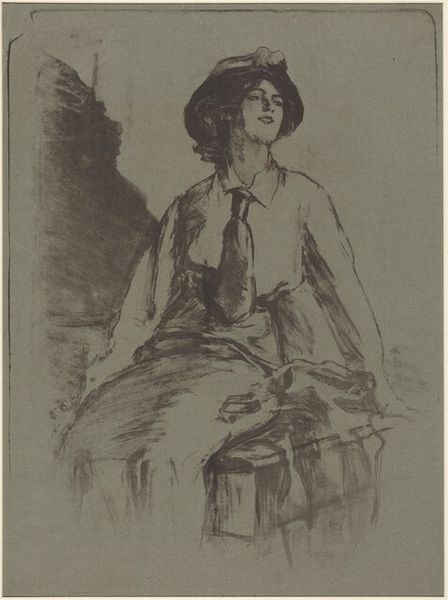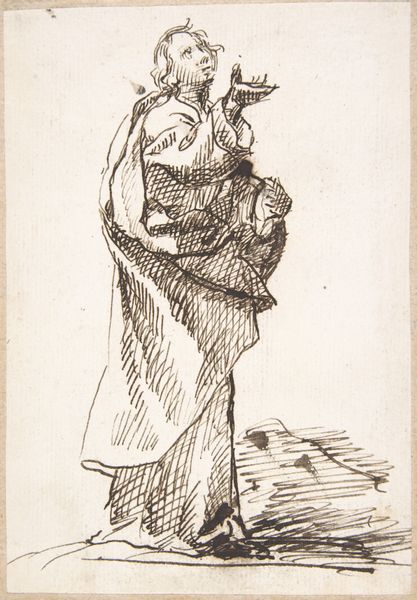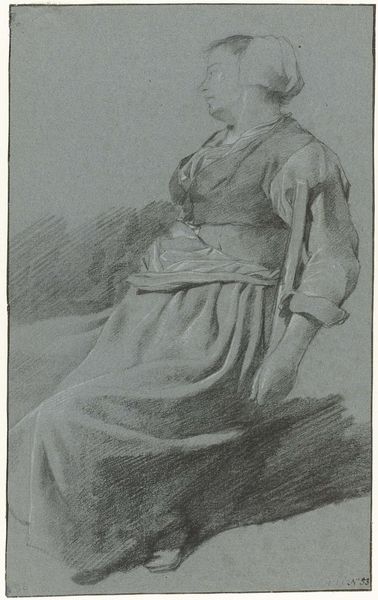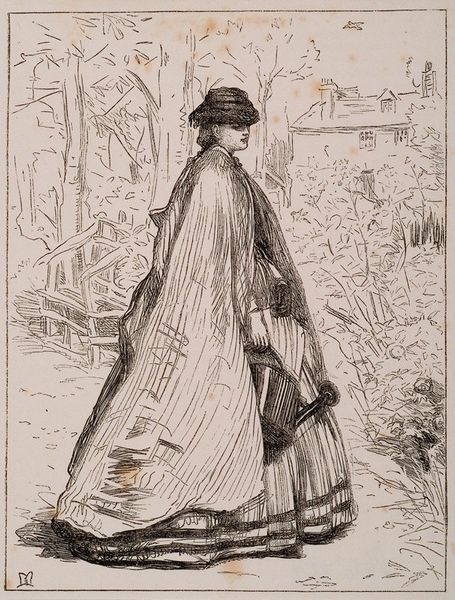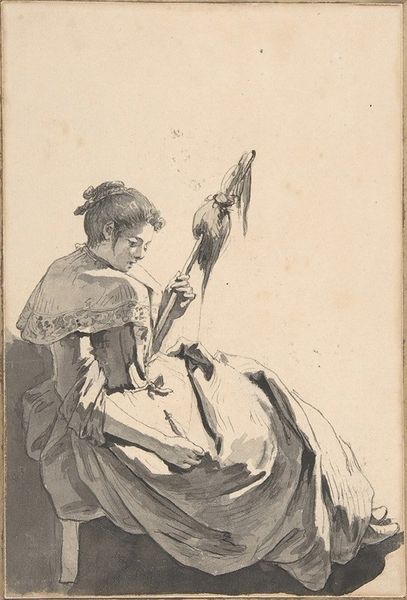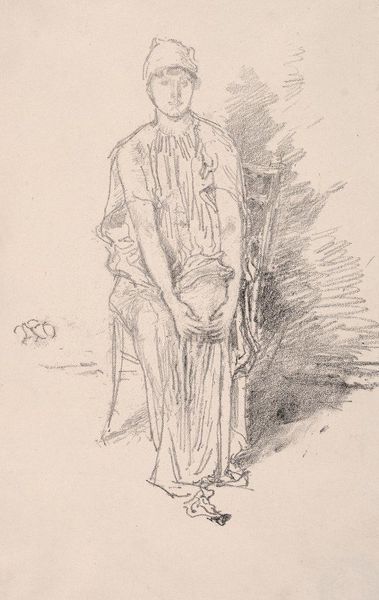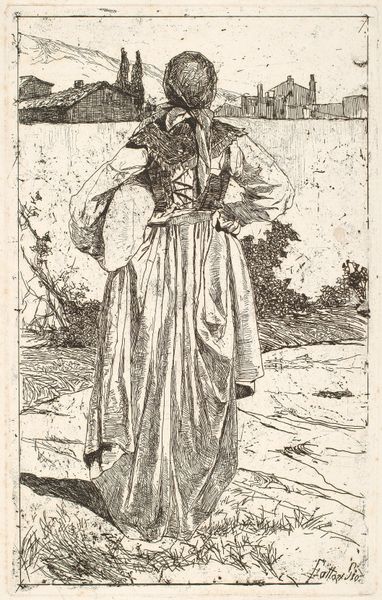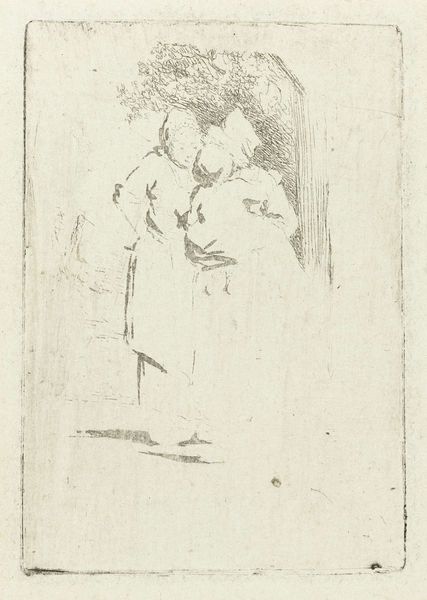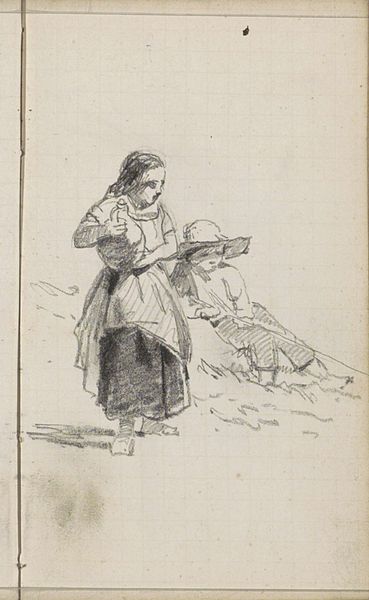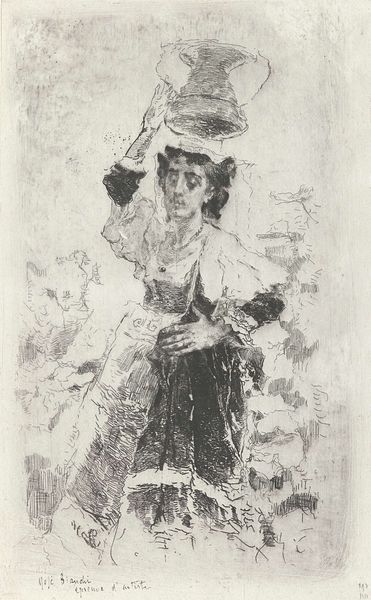
drawing, ink, pen
#
drawing
#
landscape
#
figuration
#
ink
#
ink drawing experimentation
#
pen-ink sketch
#
sketchbook drawing
#
pen
Copyright: Public Domain: Artvee
Curator: Looking at Carl Bloch's "Standing Woman and Child," likely from 1899, what strikes you first? It's rendered in pen and ink. Editor: The raw energy of it. The bold, dark strokes against the tan paper. The pen work almost obscures the figures and their surroundings in shadow, as if something somber pervades. What context can you share? Curator: Bloch, while primarily known for his paintings of biblical scenes commissioned by the Church of Denmark, occasionally turned to more intimate, secular subjects. Drawings like these offer insight into his process beyond those grand narratives. It’s important to remember the social pressures on artists at this time. Genre painting was seen as being far below paintings about religion and biblical characters. Editor: Yes, and look how quickly it must have been executed. The cross-hatching, the layering—it all points to a real immediacy, an interest in the *making* rather than some polished end product. Notice too how economical Bloch is with line to create the illusion of folds and fabric in the woman’s clothes. It is as if he did not care about the artistic expectations and boundaries placed on paintings at that time, a breath of fresh air! Curator: Precisely! That perceived sketch-like quality also connects to emerging ideas of the artistic genius at this period, an artist capable of capturing raw emotion and immediate impressions, defying academic tradition. This piece allows us to consider how Bloch, working within very defined religious and institutional settings, also pursued a freer kind of artistic inquiry. Editor: Indeed. This is a rare look into the labor behind his art. This image gives the sense of the everyday; a woman and child are framed in their lived context of both countryside and custom. These aspects bring an accessibility that you can not get from biblical scenes. Curator: A great point, and an interesting contradiction to explore! The context certainly invites one to look beyond the surface. Editor: Absolutely. For me, I leave this image wanting to explore how "finished" or "unfinished" artistic forms are valued differently based on the materials involved in production. Curator: I find myself considering the interplay between public and private, between the monumental works we often associate with Bloch and the quiet introspection found within these sketches. Thank you for this insight.
Comments
No comments
Be the first to comment and join the conversation on the ultimate creative platform.
